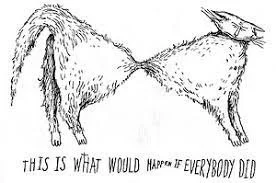Bandwagon Effect
If you’ve ever managed a fundraising gala, you know how important it is to state the dress code on the invitation. Party Attire, Business Attire, or Black Tie.
While every year there is increasingly more gray area for what is “acceptable,” leaving much more opportunity for people to express themselves through their dress, you will still likely have donors reaching out to ask for an explanation of “party attire” or to ask “what do people usually wear to this event?” Why? No one wants to get it wrong.
Sure, there are people who might show up realizing they have missed the mark and can laugh it off. But most of us experience an emotion or two. From “This is so embarrassing.” to “This is really hilarious.” or even “I’m such a misfit.” Those feelings are a reaction to social proof and are what make the bandwagon such a powerful force.
The Bandwagon Effect - What is it?
When people do something primarily because other people are doing it, even if they don’t understand why, that’s the Bandwagon Effect in action. There is such a strong tendency for people to align their beliefs and behaviors with the people around them. People like to be on the winning team. They like to be in with the in-crowd.
We all experience the Bandwagon Effect every day in all kinds of mundane ways.
We patiently stand in line at the grocery store; we stand up and sing during the seventh-inning stretch; when people start to clap at a concert, we do too.
You’re out to dinner with friends and the main course plates have been cleared. The server approaches the table and asks if you’d like coffee or dessert. What do you do? I usually look around the table with a questioning gaze. I’ve somehow internalized that ordering coffee or dessert is a group decision. You’re asking everyone to linger a little longer, perhaps asking if anyone wants to share a piece of pie or an order of tiramisu. And once one person decides to have coffee, the likelihood of others at the table ordering coffee or tea is pretty high. “I will if you will!” The same is true for that second round of drinks.
It’s all about the FOMO. We are wired to want to be part of the crowd. We will adjust our behavior in order to be assured that we will be included. We will adopt a behavior, a way of thinking, a way of dressing, a way of spending our time, to increase the likelihood that we won’t be left out.
Where Did The Phrase “Jump on the Bandwagon” Come From?
Dan Rice was incredibly famous in the time before the American Civil War. His career path was varied and interesting: he started out as a circus clown, then moved on to be an animal trainer, actor, director, dancer, and finally a politician. The classic American entertainer-to-politician career trajectory.
He ran for Senate, Congress, and President of the United States, dropping out of each race. He was also one of the main models for "Uncle Sam.”
At one point, Rice campaigned for Zachary Taylor’s presidential race, and came up with the idea that Taylor use the circus bandwagon to drum up excitement. This was a mode of transportation and spectacle that Rice was very familiar with. And this is how the phrase "jump on the bandwagon" was coined.
In theory, conformity has negative connotations for Americans. We celebrate rugged individuals, mavericks, and trailblazers. We make our own decisions. We have freedom of choice. We have freedom of speech. Live free or die. But even in our nonconformity, we are looking for a version of nonconformity that other people are participating in.
Because of that, nonconformists like Dan Rice are often celebrated. And when they ask us to “jump on the bandwagon” we often become ready followers. That’s where our human tendencies override our American tendencies.
Let’s Talk About The Ways That The Bandwagon Effect Takes Hold.
The human factors that make the Bandwagon Effect so powerful are groupthink, a need to be included, and a desire to be on the winning side.
Once the majority of people in a group believe in something, it becomes increasingly hard to be the contrarian. Especially if momentum is moving away from you. Humans are wired to want to be a part of the group, and to be on the winning side (the one with the most adherents). Being the rugged individual, the maverick, the trailblazer might be something Americans all praise and admire, but most of us don’t actually want to be those things.
Do you remember that feeling as a child when you found out you didn’t get invited to a birthday party or weren’t picked for the team? The devastation? The hurt? Those are uncomfortable feelings and they stick with us. The desire for social acceptance is so strong, we’ll twist ourselves into pretzels, buy silly gadgets, dress in questionable styles, adopt outrageous hairstyles just to signal “I’m just like you” or “I’m a part of this group.”
Take a look at this old-school Candid Camera clip for an amusing and silly example of the Bandwagon Effect - Solomon Asch’s Elevator Experiment.
You think you wouldn’t turn to face toward the back of the elevator just because everyone else did for who-knows-what reason, but it’s very hard to stand your ground when you’re the only one.
Bandwagon Effect in Marketing
Social media platforms rely on the Bandwagon Effect. The only way TikTok, Instagram, Facebook, and other social media platforms function are if enough people who want to interact have joined and actively engage. Without the Bandwagon Effect, these platforms are worthless.
When you’re shopping online and you discover an “only 3 left!” warning near the purchase button, that is activating your Bandwagon Effect tendencies. It must be a great product if so many people have already purchased it. If everyone’s buying this, I want it too!
Bandwagon Effect in Fundraising
A Paddle Raise at a gala auction is one of the best examples of the Bandwagon Effect in fundraising. Pick a moment during a live auction when the energy is high - somewhere just past the middle. This is your moment to make the pitch for the mission, and then ask everyone to give. Start with a high number - but a number that you KNOW you’ll have at least one commitment. Then work your way down - from $5,000, to $2,500, to $1,000, and so on.
At each level along the way, remind the attendees about the importance of supporting the mission and why. Work your way down to a contribution level that you know every single person in the room can support. At that point ask everyone who has already given to consider an additional $10. With so many paddles in the air, it’s much more likely for everyone to “jump on the bandwagon.” Not only will you raise a significant amount for your organization, but everyone in the room will feel the joy of participating in some way. The energy should be even higher as you go into the final auction items of the night.
The collection plate has long been a staple of Sunday services in the Christian church tradition. While many churches are moving away from that practice and utilizing technology and other giving methods, it is a classic way to inspire participation from everyone at the service.
Facebook fundraisers are a great example of how the Bandwagon Effect affects social media fundraising. Your friend is raising money for the local pediatric clinic to celebrate their 30th birthday. You notice that just about everyone else in your friend group has made a donation to help them achieve their goal. You are inspired by the group, and your likelihood to ignore that fundraiser is much lower. You feel a strong pull to join your friends.
My Story: What if Everybody Did?
When I was a pre-reader, I was delighted by the book “What if Everybody Did?” by Jo Ann Stover. The illustrations are wonderfully silly and alarming. I checked it out of the library repeatedly.
The book consisted of a series of “What if…” questions and illustrations that showed the chaos that ensued if ….“everybody did.”
What if everybody “made tracks”? The illustration showed footprints all over the floor, furniture, walls and ceiling. Domestic anarchy. I loved it.
What if everybody “squeezed the cat”? The illustration showed an exasperated cat with an hourglass waistline. Poor kitty.
Jo Ann Stover’s message to children was to resist the temptation to go along with the crowd, to question the Bandwagon Effect, and beware of the chaos and damage that can result if “everybody did.”
A warning to heed - for cat squeezers and fundraisers alike. Use this powerful force to support the work of your organization, but rethink your tactics (like many churches are doing) if you sense your tactics are creating harm, shame, or embarrassment among the group of people you are trying to inspire. You do not want your donors to feel like an over-squeezed cat!

